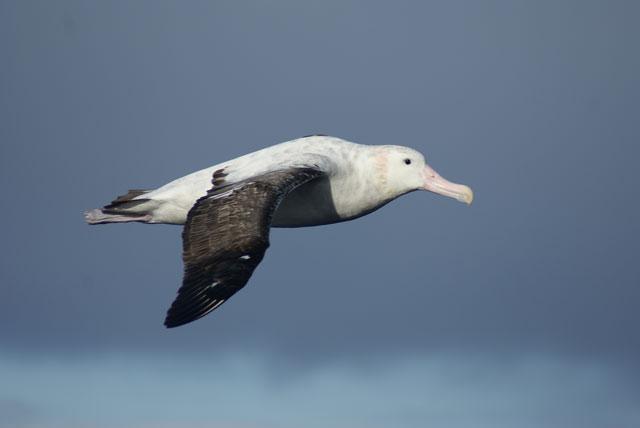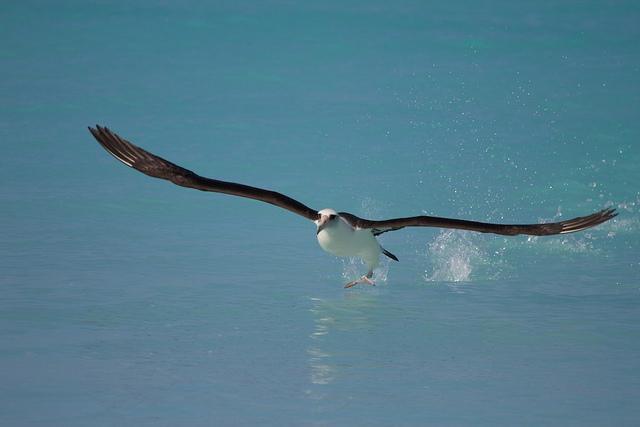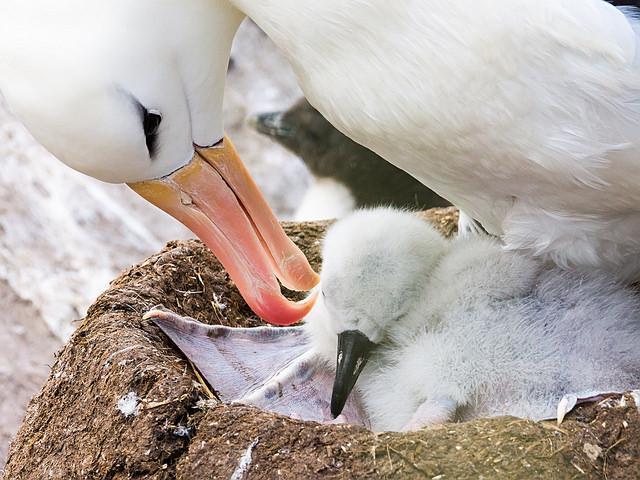Albatross success story
Using an albatross as a central motif for his epic poem, The Rime of the Ancient Mariner, which was published in the first edition of Lyrical Ballads in 1798, the English poet, Samuel Taylor Coleridge, explored the theme of unintentional and dire consequences being brought about by a wilful act of desecration of the natural world.
One remarkable albatross conservation success story is seeing win-win benefits, not only in dramatic reductions in albatross and other seabird deaths, but in the pride and independence the project brings to a team of people with disabilities who are working to ensure there are albatrosses “for our children’s children to come”.

Pic courtesy of Bronwyn Maree/BirdLife South Africa
Seabirds as a whole and albatrosses in particular, are among the most threatened groups of birds in the world. Of particular concern are accidental seabird deaths during fishing which constitutes the single greatest threat facing many seabird populations - with a global fishing fleet of approximately 4.3 million vessels, more than 300 000 seabirds, 100 000 of which are albatrosses, are caught each year by tuna longline fleets and trawl fisheries as bycatch, which has been the cause of massive seabird population declines.
In a landmark seven-year study undertaken by BirdLife South Africa, with support from the Department of Agriculture, Forestry and Fisheries of South Africa, and other collaborators, albatross deaths have been reduced by 99 percent and other seabird deaths by 90 percent in the South African hake trawl fishery; these huge reductions being made possible by a single mitigating measure – a bird scaring line made in a collaborative project between BirdLife South Africa, Total South Africa, and the non-profit organisation, Ocean View Association for Persons with Disabilities (OVAPD).

Photo by HarmonyonPlanetEarth/Flickr
Albatrosses are the largest flying birds on earth and at more than 11ft from tip to tip; their wingspan is the largest of any bird species. Most albatrosses are only found in the Southern Hemisphere, and these magnificent long-distance ocean travellers live primarily at sea where they forage and rest on the ocean waves, travelling thousands of miles to find food, and only returning to large natal colonies at islands like the Marion and Prince Edward Islands, Falklands Islands, Gough Islands, Tristan da Cunha, Tasmanian Islands, Crozet Islands and Kerguelen Islands, to breed.
Exceptionally long-lived, albatrosses may live for 60 years or longer, and a pair bond may last for life. Initially birds engage in breeding dances with many partners before one partner is finally chosen and a pair formed. The great albatrosses take over a year to raise a chick from laying to fledging, with egg laying and chick rearing constituting an enormous investment by both parents.

Photo by David Cook
Albatross incubation is the longest incubation period of any bird, lasting from 70 to 80 days, and great albatross chicks can take up to 280 days to fledge. Because both partners take it in turns to brood and guard the chick, one of the parents foraging at sea while the other guards the chick on land, the death of an albatross at sea may have an exponential effect as both the brooding parent and chick may die when the albatross they are waiting for to bring them food, fails to return. Also, with delayed sexual maturity and few offspring produced, population decreases can occur with even relatively modest increases in adult mortality rates.
To address the global threat of albatross extinctions, in 2005 the Royal Society for the Protection of Birds and BirdLife International, formed the Albatross Task Force (ATF) as the world’s first international team of dedicated instructors to work directly with fishermen to demonstrate the correct use of mitigation measures to reduce albatross and other seabird bycatch.
In 2006, through the efforts of BirdLife South Africa, South Africa became the first country to establish an ATF team. Through constructive engagement between the ATF team members and fishermen, which saw the adoption of bycatch mitigation measures such as setting lines at night so that seabirds can’t see baited hooks, reducing deck lighting, and weighting lines so that they sink, South African longlining fisheries have reduced incidental seabird mortality by 85 percent. The most dramatic results in the reduction of seabird deaths observed by the ATF team, however, have been in the South African hake trawl fishery, where albatross deaths have been reduced by 99 percent and other seabird deaths by 90 percent. The work of the ATF South Africa team has won first prize in the “Green Technology” category at the Mail & Guardian Greening the Future Awards.
Bronwyn Maree, who joined the team in 2008, is one of the longest-serving ATF team members and as ATF Leader (South Africa), Maree has led her team with distinction. In recognition of her leadership capability and the pivotal role she has played in albatross conservation over the past six years, Maree has been the recipient of an international competitive award for young conservationists, the Future for Nature Award 2014, for which she was chosen from a total of 126 applicants from 58 countries. This prestigious award carries a purse of €50 000 for each winner, which in Maree’s case, will be used to test new devices for eliminating seabird bycatch in tuna longline fishing.
Maree says: “It has been incredibly special to be out on the boats with the fishermen as they realise how amazing an albatross is – in fact some skippers have even taken up photographing albatrosses while out at sea through our work. This project is also an excellent example of how collaboration between government, environmental NGOs and fishing corporations can result in hugely significant conservation successes!”
Source
Carole Knight is a futurist and freelance investigative writer with specializations in sustainability, emerging trends, and adaptive leadership. She lives in the Western Cape of South Africa. The website for BirdLife South Africa is www.birdlife.org.za
Call us and schedule your listing today! Contact Us
Copyright © 2025 Hermanus Online Magazine. Web Development by Jaydee media.
